_____________
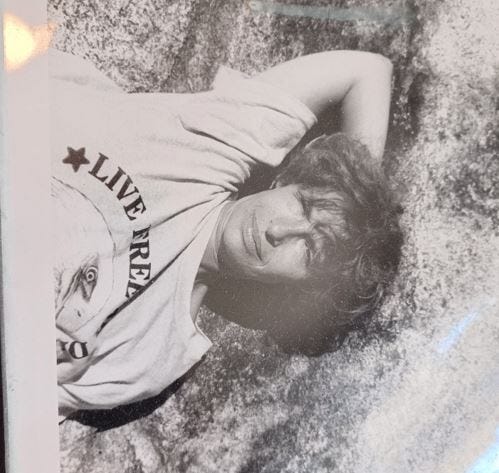
‘Ann Rower’s If You’re a Girl was originally published in 1990 by Semiotext(e) alongside Cookie Mueller’s cult classic Walking Through Clear Water in a Pool Painted Black. Aside from being friends, the authors share many parallels, most notably their impulse to write, or, more accurately, their inability to stop. “I started writing when I was six and have never stopped completely,” Mueller once remarked, which Rower now closely echoes: “my last book, I thought to myself, though I would never stop writing. Could never.” It struck me odd that I found relatively little on Rower when compared to her much-celebrated counterpart. Though she (relatably) fantasised that befriending Cookie would get her “invited to all these cool parties with all these cool artists,” her own life certainly does not fall short of sensational: she toured with Kathy Acker and Lynne Tillman, wrote plays with Francis Ford Coppola, took LSD from Timothy Leary alongside Allen Ginsberg and Peter Orlovsky, danced for Martha Graham, and ended up in a hot tub with Diane di Prima.
‘But, as Rower herself wisely observes, while good seems to perpetuate more good, bad also “seems to generate bad.” So when her long-time partner, Heather Lewis, committed suicide in 2002, Rower abandoned writing altogether for nearly twenty years. Yet, despite the hiatus, her writer’s affidavit holds true, attested for by the revised and expanded edition of If You’re a Girl – a dizzying, and dazzling, “circling back,” comprising the original stories laced with new writings from 2023, and selected excerpts from her two novels, Armed Response (1995) and Lee & Elaine (2002).
‘The book is as much about Rower’s life as it is about Rower writing her life. The stories unfold rapidly, breathlessly, remarkably maintaining their force as they hopscotch from one person to another, one time frame to another (note the non-chronological arrangement of the collection itself) – leaving the impression that every fleeting moment has some profound consequence. All the while faithful to that characteristic “unedited” style which makes it feel like you’re really having a conversation. “Maybe I’d better cut this part. It’s kind of embarrassing,” she admits on more than one occasion. Describing her relationship to her PT, she speaks of cathexis: “the investment of mental or emotional energy in a person, object, or idea”; but by the end, it’s clear that her truest attachment is to us: “There was really no one left to tell who would get it. Until now, I suppose, when I can finally tell it, tell this, dear reader, to you.”’ — Gabriela Bernabeau
Chris Kraus & Ann Rower in Conversation
Spotlight Conversation – with Ann Rower
Ann Rower @ goodreads
‘Thanks for the Memory’
Buy ‘If You’re a Girl’
 Ann Rower If You’re a Girl
Ann Rower If You’re a Girl
Semiotext(e)
‘Ann Rower’s first book, If You’re a Girl, published by Semiotext(e)’s Native Agents series in 1991 in tandem with Cookie Mueller’s Walking Through Clear Water in a Pool Painted Black, cemented her reputation as the Eve Babitz of lower Manhattan.
‘Rower was fifty-three years old at the time. Her stories—urtexts of female autofiction—had long been circulating within the poetry and postpunk music scenes. They were unlike anyone else’s: disarming, embarrassing, psuedoconfessional tales of everyday life dizzily told and laced with dry humor. In If You’re a Girl, she recounts her adventures as Timothy Leary’s babysitter, her artistic romance with actor Ron Vawter, and her attempts to evade a schizophrenic stalker.
‘Rower went on to publish two novels: Armed Response (1995) and Lee & Elaine (2002). After the 2002 suicide of her partner, the writer Heather Lewis, Rower stopped writing for almost two decades. And then she picked up where If You’re a Girl left off. No longer a girl, she produced dozens of stories from her life in New York as an octogenarian.
‘This new, expanded edition includes most of the original book, together with selections from both her novels and her recent writings. If You’re a Girl is a trailblazing book that manifests Rower’s influence on a generation of writers, and proves that mature reflection needn’t be lacking in attitude.’ — Semiotext(e)
Excerpt





Extras
ANN ROWER: SVA JAZZ AND POETRY FESTIVAL
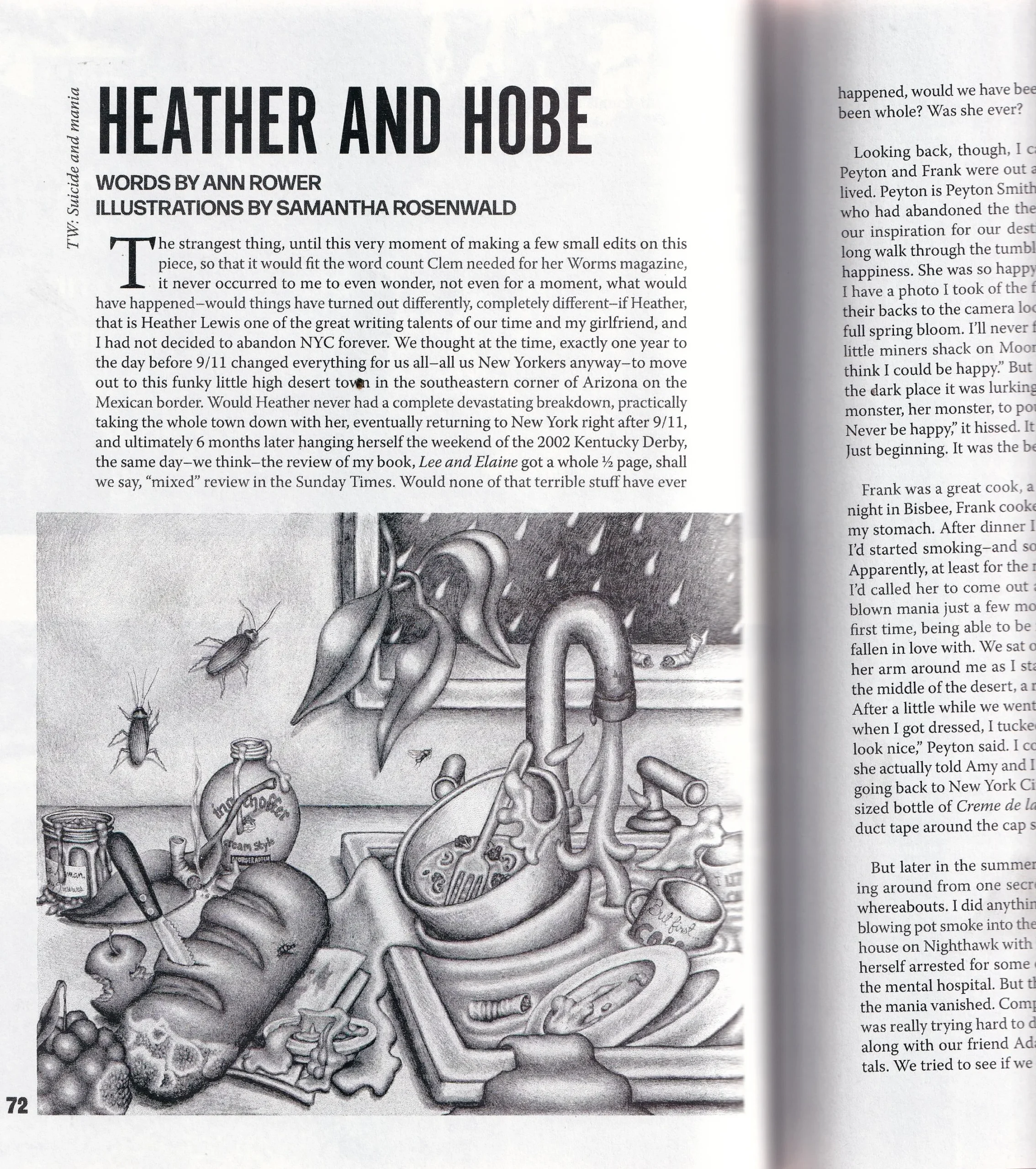
_____________
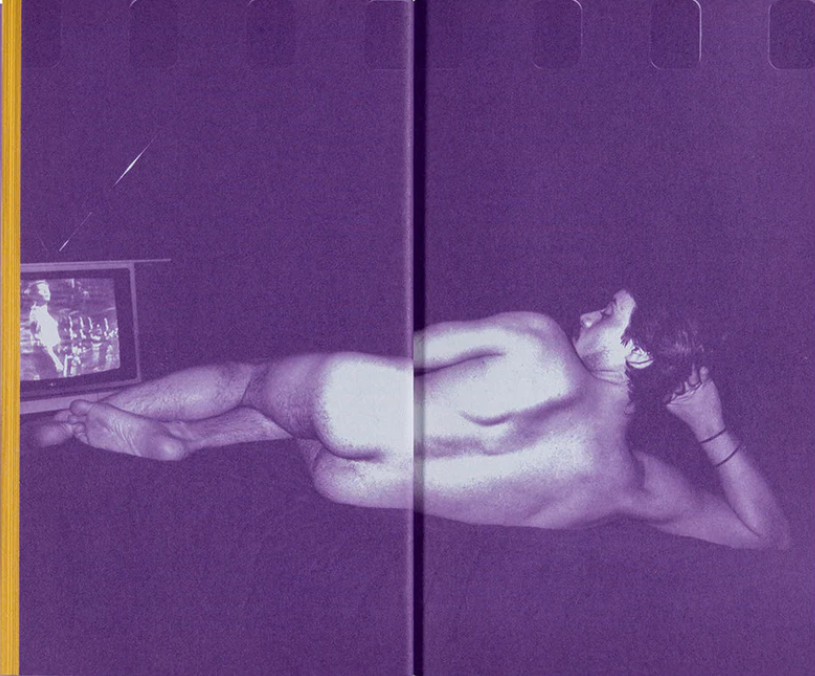
‘A few years ago, London-based Sam Ashby was a busy graphic designer and a casual fan of queer film, albeit one with a thirst to explore the genre’s legacy. He also wanted to put his design skills to work on a magazine, but he hadn’t come upon the right subject.
‘And then one night, while watching Paul Morrissey’s “Flesh” starring Warhol favorite “Little”Joe Dallesandro, he found his muse. Thus Little Joe — the biannual, limited-run “magazine about queers and cinema, mostly” — was born.
‘Buoyed by Ashby’s artfully eclectic design skills (recent projects include the UK poster for Andrew Haigh’s smash “Weekend”), Little Joe fills its pages with anecdotes from the queer film world and celebrations of queer cinema. You can find an interview with John Waters that touches on “Pink Flamingos” biker fanbase, Kevin Killian’s story of Sal Mineo cavorting about the set of “Who Killed Teddy Bear?,” and Wayne Kostenbaum’s 1999 lecture about Warhol’s “Taylor Mead’s Ass”.
‘Little Joe provides the opportunity for queer film fans of all ages and degrees of cinephilia to enter into the conversation. Their essays and features make the case for new addititons to the queer canon or provide new entry points to talk about well-established entries in the hallowed halls of queer film history.’ — Bryce J. Renninger
iamsamashby
Little Joe Magazine Site
At work with Sam Ashby, Little Joe
Little Joe Magazine @ instagram
Buy ‘Little Joe’
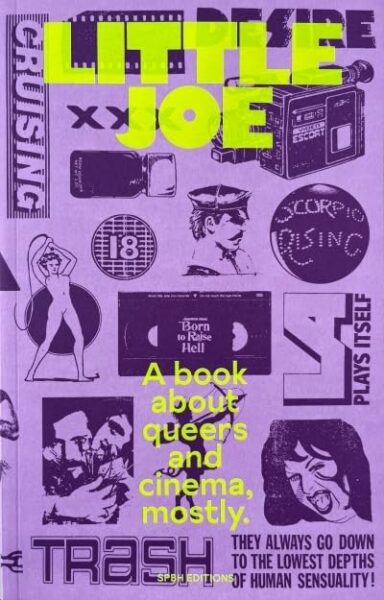 Sam Ashby, ed. Little Joe: A book about queers and cinema, mostly
Sam Ashby, ed. Little Joe: A book about queers and cinema, mostly
SPBH
‘This volume brings together material from the cult queer cinema journal Little Joe, published between 2010 and 2021. Described by Gayletter as ‘The best damn film magazine in the whole wide world’, Little Joe is a unique forum for the discussion of film around subjects of sexuality and gender within a queer historical context. The publication’s rebellious perspective challenges our preconceived notions of film history and proposes a queer canon of cinema, frequently from the margins of taste and style.
‘The hard-to-find, limited-edition publication is stubbornly print-only, privileging the word-of-mouth and hand-to-hand method through which many of the films it celebrated would have primarily circulated. It rejects the typical approach of reviewing new releases in favour of exploring films that demand reappraisal, celebrating everything from obscure art films to porn and Hollywood classics as worthy of critical debate. Each issue featured essays, in-depth conversations, short stories, comics, commissioned artworks, and archival discoveries from a host of queer and allied writers, artists, filmmakers, and academics, including John Waters, Sarah Schulman, Douglas Crimp, William E. Jones, Erika Balsom, Jeremy Atherton Lin, John Greyson, Elizabeth Purchell, Liz Rosenfeld, Peter Strickland, Ira Sachs, Terence Davies, Kevin Killian, Wayne Koestenbaum, Abdellah Taïa, Marlene McCarty, John Cameron Mitchell, Rosa von Praunheim, Stuart Comer, Ed Halter, Tobi Haslett, Jenni Olson, A.L. Steiner, A.K. Burns, Desiree Akhavan, and Andrew Haigh.’ — SPBH
Excerpts
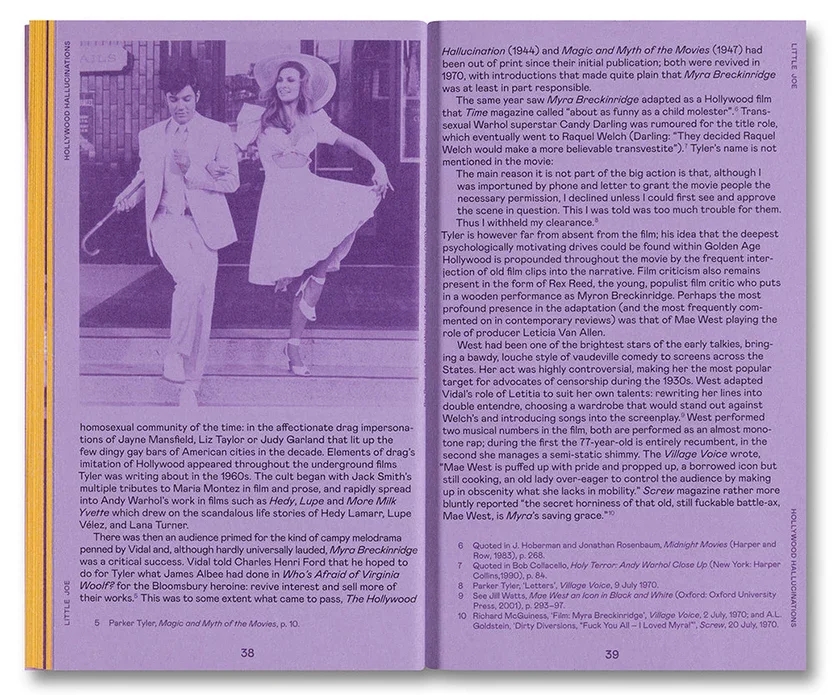


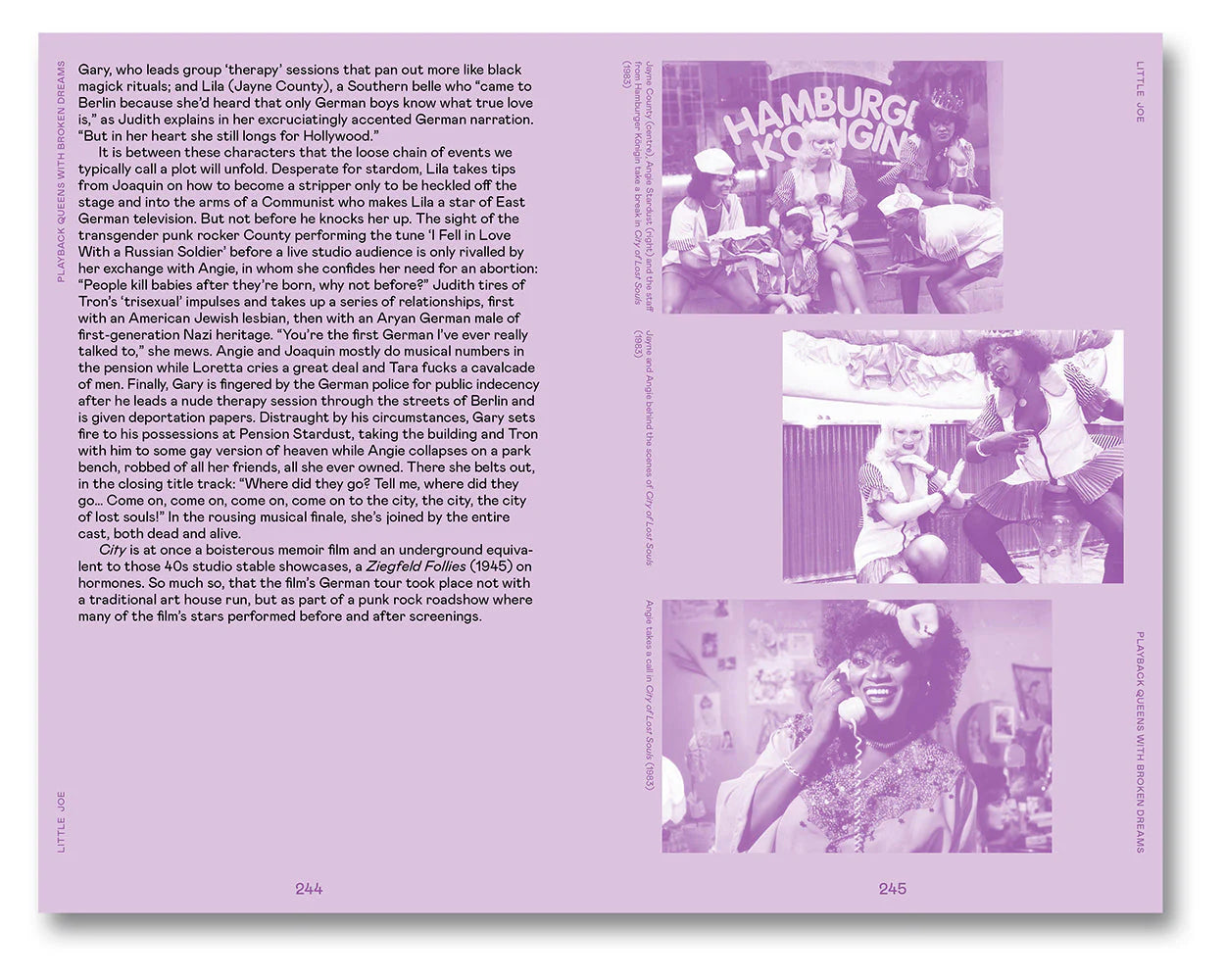

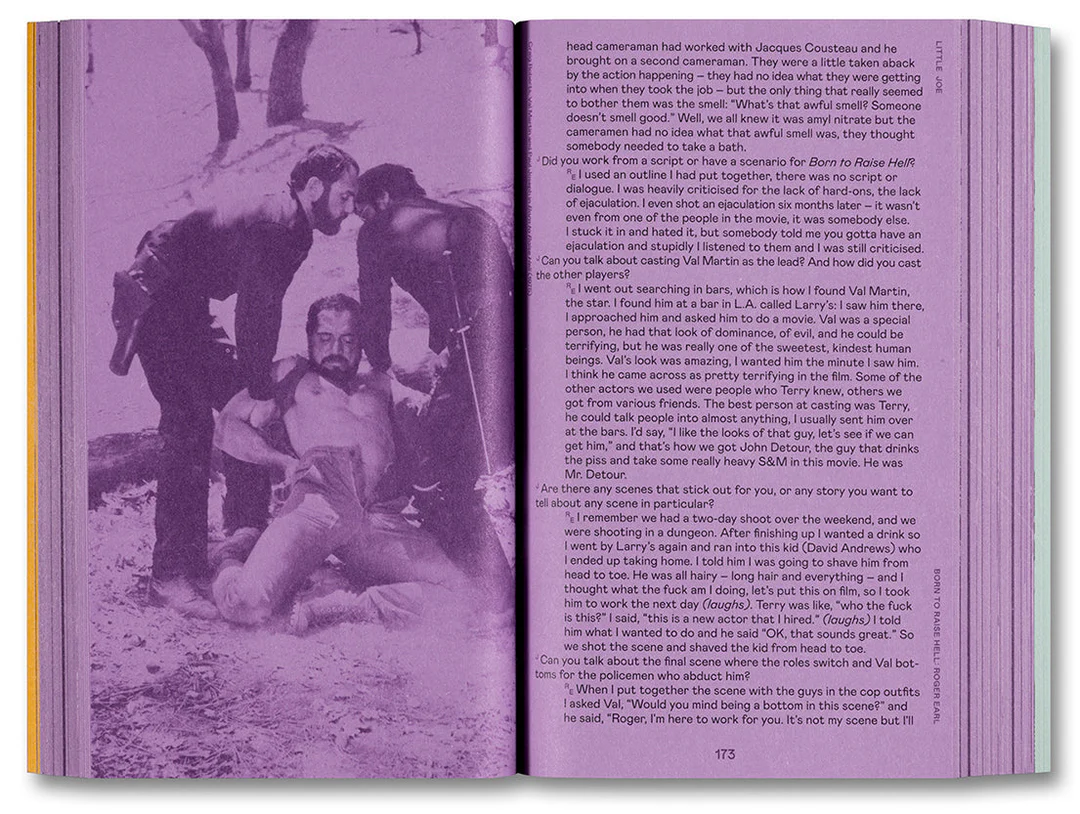
Extras
Sam Ashby – ‘Attractive Male Slides: Aversion Therapy & Queer Science Fiction’
“The best damn film magazine in the whole wide world”
___________________

‘Throughout the 20th century, I have always imagined a future similar to a 1950s science-fiction film or the animated TV series The Jetsons. Although disappointed we don’t carry jet-packs to fly from one place to another, or cars that hoover from the pavement; we do have the home computer. The Northridge Earthquake is the time that I remember when I felt that I did truly live in the future. We bought our first Macintosh Apple computer the evening before the big quake. When I put it on to find information on the World Wide Web about what was happening that morning, it was the first approach to the New Age. January 17, 1994, is when I became the new man, and by the end of that week, I felt part of a significant change in culture and society. Thirty years later, Jack Skelly has written Myth Lab, which is very much the definition of life in this present age. Although I saw traces of that culture thirty years ago, this book is the product of a new sensibility that is straightforwardly clear to anyone who gets an erection or is horny. Myth Lab is a very sexy book.
‘Jack Skelley conveys a world where sex is slippery and available. His poetic, dense, and witty prose references Percy Shelley and the Rolling Stones. The cultural high points range from Jacque Lacan’s theories to a Walt Disney hell (or heaven if you prefer), and Skelley can juggle all the ingredients without dropping the ball. He has the skill to understand the surface of pop culture but is able to dig into its skin and go inside the bones and blood veins to see how it works. Many poets/prose writers confront, accept, and analyze pop culture in its sexual and surface approach to the landscape. Still, Skelley’s technique is one of a skilled prose sentence maker, and his writing is clear but has many-level meanings, including the humor and tragedy of being a human in this odd yet wonderful world.
‘Desire with a new vocabulary to express the urges between bodies, and it doesn’t matter what gender, or if any, has traces in the early cut-up novels by William S. Burroughs. Still, Skelley’s sensibility is a mixture of European sexual writing, such as Georges Bataille, but this book is unique in the pop culture surrounding Jack. The extra layer of meaning makes this work enticing and noticeable. The spiritual meets the vastness of sexuality, which is a frontier that is still worth exploring. Myth Lab is everything, and this dense 100-page book is a guidebook, as well as something to be amused by. For me, that is the perfect relationship for a reader with a profound experience, and that is Myth Lab.’ — Tosh Berman
Jack Skelley @ instagram
Jack Skelley @ goodreads
Jack Skelley interviewed @ full-stop
“Feeling Couple”
Buy ‘Myth Lab’
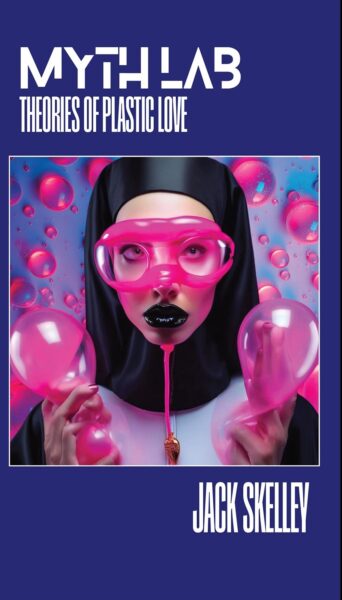 Jack Skelley Myth Lab: Theories of Plastic Love
Jack Skelley Myth Lab: Theories of Plastic Love
Far West Press
‘Myth Lab: Theories of Plastic Love is a genre-defiant sex-trip to post-human dimensions. If C.G Jung, magic-mushroom shaman Terence McKenna and Camille Paglia (Sexual Personae) had a three-way while binging on George Bataille and undergoing Hormone Replacement Therapy, their baby might be the erotic cocktail of Myth Lab. Its extreme theme is nothing less than the fate of the species.’ — Far West Press
‘Brilliant and wild, Jack Skelley’s Myth Lab is a manifesto of exuberance disguised as a sci-fi sex test-center for the invention of communal futures. Skelley’s a mad scientist, scholar and poet.’ — Chris Kraus
Excerpt
Rendezvous with God-MILF
The Exposé : Transvestigation Revelations
Many if not all public figures deceive the genders they were assigned at birth.
This video proves that Michelle Obama is a man who presents as a woman: Hands, shoulders, genitalia, frozen face and “female” hairstyle, carefully structured wardrobe and distorting smile. Just before her death, 81-year-old Joan Rivers announced Barack Obama is gay. For this, Joan Rivers was murdered by the Obamas.
We exhume Cleopatra to suck their ghost penis: Their Adam’s apple throat bulge proves better hung than me.
But what about celebs already claiming transgender status? They are double Trans! Caitlyn Jenner is a woman as a man as a woman.
Every politician. Every photo portrait stamped with a Getty watermark. Every famous person today and throughout history is EGI: ELITE GENDER INVERT.
Ariana Grande’s HRT business was her entry to stardom !
Beyonce has a male digit ratio !
Natalie Portman has straight manly clavicles !
Ronald Reagan has misplaced necrotic nipples !
The Avastars
BUT now, these celebri-mutations guide a great leap. Not by genetic adaptation but by evolution of the concept of biology will come (and I’m not shitting here) the conquest of time and space. Transplants, cosmetics, and HRT jump-start the acceleration of the race. And gender dysphoria unravels to gender diaspora!
The Scripture: Apocalypse Mom
I
The Singularity of Infinite Plurals
With the advent of the sky saucer mandala, your personal celeb/trans menage de beaucoup annihilates time through sexstasy!
Blow-up your pronouns, dim earth-normies. Under evolution-omics, euphoria puffs multi-person plurals: Here in the Great Gynopolis, each party’s gravity grip and rubbery lips polymorph on the sheets of time, and glint like string-theory party lights: One life with many eyes popping open in the glorious Overhole.
Gender particles – like galaxies and all matter – resist parsing. Pronominally, “him” or “her” are more Q than A.
—– Are you me or am I you?
—– Do I suck you or do you pump me?
—– Was what’s thrust FROM the past actually yanked TOWARD the future?
I can’t push it out without pulling it in, they said on the bed, arms pinned overhead. In this reverse engineered Big Bang, species complexification is not shoved from an origin, but towed towards a pre-ordinated future: Not growing outward, but gathering inward towards a single completion.
—-These antics instant-replay to advance eros itself.
—-Hormones are the third person of the Holy Trinity.
—-The boulder-busting Easter in her heart darts into big-ass data.
That engorged weapon that pierces the martyr’s skin outlines “original sin” on the cave wall – twin shadows where one signifies itself and coincides with the other.
The next sexual position for the body engaged in this three-way is union with the other two. Now, transpose this triad to a higher key: Tranify one augmented male with the parts of all three partners, and peer thru ruby-glitter layers of celestial celebrity.
Mother Beloved appears in sticky stained glass. The chaste bride’s moan and harlot’s curse is prima materia – it only matters the first time, when the chaos of everywhere poured into vessels of contradictions and colors. (As described in Jung’s Mysterium Coniunctionis.)
I press the tremolo bar bending notes of Time.
And, oh! My Sister Brother and Space Ghost Host, epigenetic alteration is no longer a biologically based but a linguistically based pink triangle mystery upthrust and untucking the high-thread-count sheets of mother-matter, once housekeeper-tight, as yearning casts bodies past adolescence to slurp up another meta-human – even a Father-God fraud – then and forever folded into androgyn quarks, and – oh, ladylad! – beautiful to behold.
II
The Constellation Glamazon
Skimpy yet cloaked, was she radically normative cis-het, or hot trans tail trailing scent? Were her bronzed contours so all-caps to advertise jism cosms of divadom? Ditto the fat black starry lashes, thunder thighs, ruff-tuff creampuff shoulder-to-clavicle ratios, and anti-gravity ultra-high-projectile lunar boobs. These bookended a grande-sized Mariana Trench proportioned to slot phalli or interlocking pairs of nymph nips.
Oh, such sweet disorder in the mess. That gravelly laugh was her brain freeze chugging a beer and puffing galaxy dust. (Chokey weed, for sure, but I never saw her smoke a cigarette.)
Were the obvious surgeries rip-offs or tip-offs?
Was the bimbo confusion boyish, girlish or combo-pack?
Was that dummy dolly act for him or herself?
For when Lola croaked her throaty coaxes, the Ray Davies inside just about died.
You see, as technology dissolves barriers between mind and machine, cosmetics spiritualize matter. A mystic malleable persona is plastic in the peak sense.
(As Joris K. Huysman’s Against Nature extolled the perfection of fakeness: “He had done with artificial flowers aping the true; he wanted natural flowers imitating the false.”)
Envision her skin. Two highly attractive blackholes may swap spit in a death grip. We don’t see them: They go AWOL from the electro-spectrum. Now, however, hands-on analysis of Mary Mammoplaster Caster confirms Einstein’s far-fetched concept of “gravitational ripples.”
It works like this: Epidermis stretches over swelled orbs. These waves (not particles) softly klink and krinkle when she up-cups the boobs. The perfect fakies bolster and upholster a stick-figure in the stars. Connect the dots into a come-hither constellation pose. The silicone domes orbit radiant whore ports. And with a ruby manicured finger she tugs at a pout just out of collagen college.
And really, the scars of surgery, visible hair-weave clips, every botch or mutilation – indeed all crow’s feet, neck wrinkles and poked-out clavicles – canonize her. They are Saint Andromeda’s ripest most exquisite fondle fruits.
Among a bazillion Brazilian butt lifts, each pair is outfitted with new nipples pointed heavenward.
Ah, the drag décor supreme Queen embeds in glam gloss: Magnify her godhead.
Extras
Jack Skelley, The Complete Fear of Kathy Acker, Semiotext(e) Press. Launch.
Interstellar Theme Park
___________________

‘In February 1982 Rainer Werner Fassbinder wrote a short article for Berlinaletip, a special issue of the weekly Berlin cultural magazine Tip published during the Berlin Film Festival. It was entitled “Alexander Kluge is Supposed to Have Had a Birthday.” It reads as follows:
The rumour that Alexander Kluge is supposed to have turned fifty recently is as persistent as that other absolutely ridiculous assertion that this very same Kluge got married sometime toward the end of the year! It is reported that he actually went ahead and had a private matter officially institutionalized by an official state institution. An absurd notion—several hours’ worth of stirring movies by the filmmaker Kluge, as well as a whole lot of illuminating and stimulating prose by the writer Kluge, do document after all that it is one of his chief aims to call every kind of institution into question, particularly those of the state—if I interpret half way correctly—and if his work is not indeed even more radical, that is, designed to prove that basically Alexander Kluge is interested in the destruction of every type of institution. Furthermore—an anarchist just doesn’t go and turn fifty, the age at which people celebrate you. Categories like that are meaningless to him. I mean, it is precisely rumors of this sort about one of us, serving the purposes of cooptation, that make various things clear, and at the very least remind us of the necessity of continuing to struggle for our cause and of the eternal danger of growing weary in the face of gray, streamlined reality.
‘I was reminded very clearly of Fassbinder’s words at the 2002 Berlinale when, on the 14th February, Alexander Kluge’s birthday, it seemed, became much more than a rumour. Exactly 20 years after Fassbinder’s impassioned article Alexander Kluge’s 70th birthday was celebrated with a gala screening of his film Die Patriotin (The Female Patriot, 1979) at the Berlinale as part of a tribute to his life-long contribution to German Cinema. I could picture Fassbinder turning in his grave! Had the anti-authoritarian, anti-institutional Alexander Kluge himself become an institution? At risk of offending Fassbinder and answering that question in the affirmative, I should like to sketch a brief portrait of Kluge, a figure who is not only a great filmmaker, but an intellectual, a storyteller, and one of the great cultural critics of our time.
‘On the subject of birthdays, I should begin by stating that Kluge was born in the town of Halberstadt in the vicinity of Magdeburg in 1932, the son of a doctor. After completing his high school education in Berlin, he studied Law, History and Music at universities in Marburg and Frankfurt am Main and received his doctorate in Law in 1956. During his studies in Frankfurt, Kluge became acquainted with Theodore Adorno at the Institute for Social Research (otherwise known as the Frankfurt School) where he performed legal services and began to write stories. It is through his discussions with Adorno in particular that Kluge became interested in film, despite the fact that Adorno was not himself a lover of film. As Kluge has recalled in an interview, “[Adorno] sent me to Fritz Lang in order to protect me from something worse, so that I wouldn’t get the idea to write any books. If I were turned away, then I would ultimately do something more valuable, which was to continue to be legal counsel to the Institute”. In 1958 Adorno introduced Kluge to Fritz Lang, who was filming Der Tiger von Eschnapur and Das Indische Grabmal (1958-1959) in Berlin. Legend has it that Kluge found the experience rather tiresome and began to write stories in the studio cafeteria, stories that would eventually become material for his own films.
‘In 1960 Kluge co-directed his first short film with Peter Schamoni entitled Brutality in Stone, a poetic montage film reflecting on the notion that the past lives on in architectural ruins; that the ruined structures of the Nazi period in particular bear silent witness to the atrocities committed. This film is important for a number of reasons: Brutality in Stone marks the beginning of a process in which German filmmakers of the 1960s and 1970s began to overturn the apparent amnesia German cinema had demonstrated during the 1950s in regard to the Nazi period. In addition, the film was premiered at the annual Oberhausen short film festival in February 1961. The festival was significant because it functioned as a forum for young and experimental filmmakers attempting to develop modes of cinematic practice outside the rigid, commercial framework of the industrial system—modelled on Hollywood—that had been set up with the assistance of American occupying forces in the immediate post-war period. A year after the premiere of Brutality in Stone at the Oberhausen festival, Kluge was one of the authors and signatories of the “Oberhausen Manifesto”, a document that outlined the imperatives of bringing a new kind of German cinema into being.The 26 filmmakers, writers and intellectuals who signed the manifesto declared the old cinema dead and called for new intellectual, formal and economic conceptions of cinema to be brought into filmmaking practice, education and funding so that German cinema could distinguish itself through a new film language freed from the constraints of commerce. With the intellectual considerations in mind, Kluge co-founded, along with Edgar Reitz and Detlev Schleiermacher, the Ulm Institut für Filmgestaltung later in 1962, an institute not intended as a training ground for practitioners but as the theoretical arm of the New German Cinema. Kluge thus began his long career as a filmmaker, activist and spokesperson for what was then called the Young German Film, which would later develop into the New German Cinema in the latter half of the 1960s.
‘Just as the Oberhauseners maintained that German cinema could only be renewed through both theory and practice, so too Kluge’s cinematic practice would be unthinkable without his very particular and idiosyncratic contribution to film theory. A discussion of his films, therefore, would be not be possible without recourse to some of his most important theoretical concepts: montage, Phantasie, history/story and the development of a counter-public sphere through film. I shall therefore attempt to chart a way through these concepts as they are actualised through his filmmaking practice.’ — Michelle Langford
Alexander Kluge Site
Interview with Alexander Kluge (by Hans Ullrich Obrist)
Alexander Kluge @ IMDb
Alexander Kluge @ Wikipedia
Buy ‘ The Dragonfly’s Eye’
 Alexander Kluge The Dragonfly’s Eye: My Virtual Camera (AI)
Alexander Kluge The Dragonfly’s Eye: My Virtual Camera (AI)
Spectormag
‘In The Dragonfly’s Eye, 92-year-old author and filmmaker Alexander Kluge tests out the cooperative capacities of the Stable Diffusion model, which uses AI to process images. As a film-maker, he has many years of experience in dealing with the camera and its ways of seeing, which are unlike how a person sees. As a result, he is particularly curious about the different images that AI can generate. Kluge’s essay in the book reflects on the idiosyncrasies of these new types of images, in which chance factors and errors create subjunctive forms, resulting in open images that are hard to place. Kluge establishes rules for using the “virtual camera” and thus contributes to a debate on how AI should be handled. In a series of stories combining images and text—ranging from cases of phantom pregnancy in East Germany via Philemon and Baucis to the mercenary Yevgeny Prigozhin—he examines how the “virtual camera” opens up a space in which stories can be told and imagined in a new way.’ –– Spectormag
Excerpts


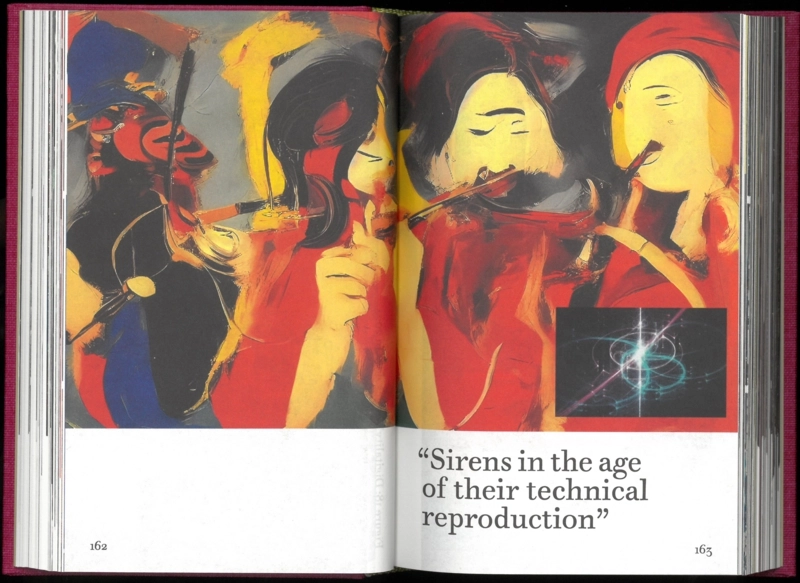
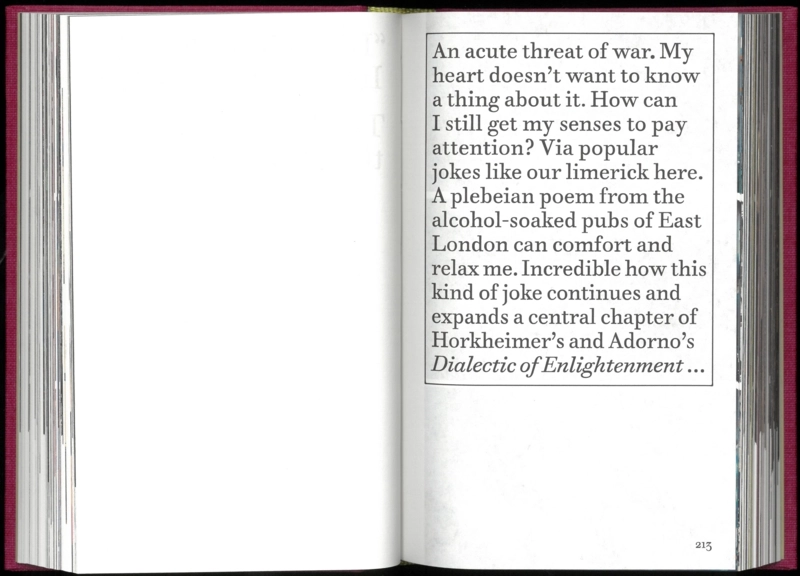
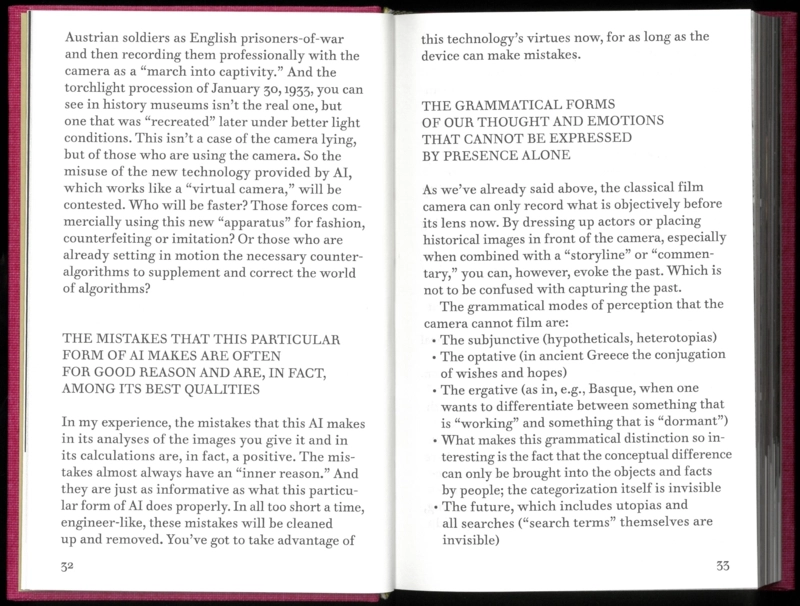
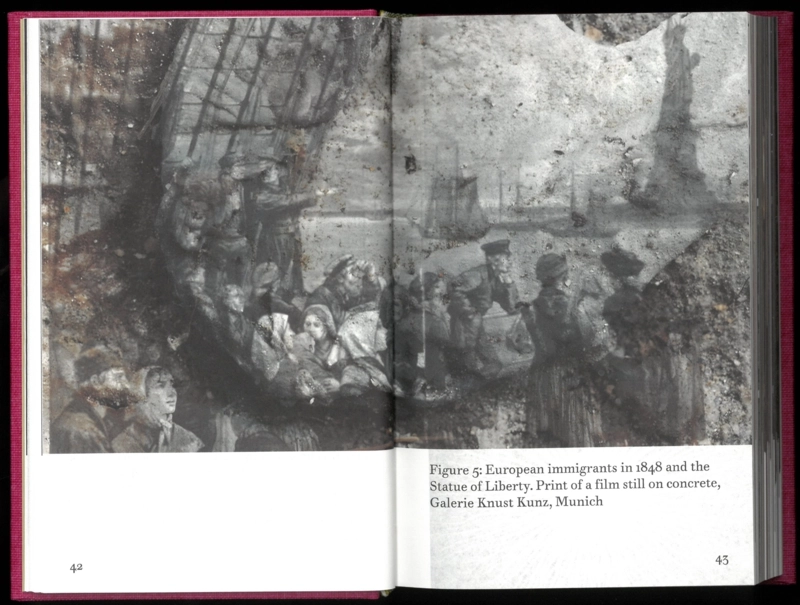
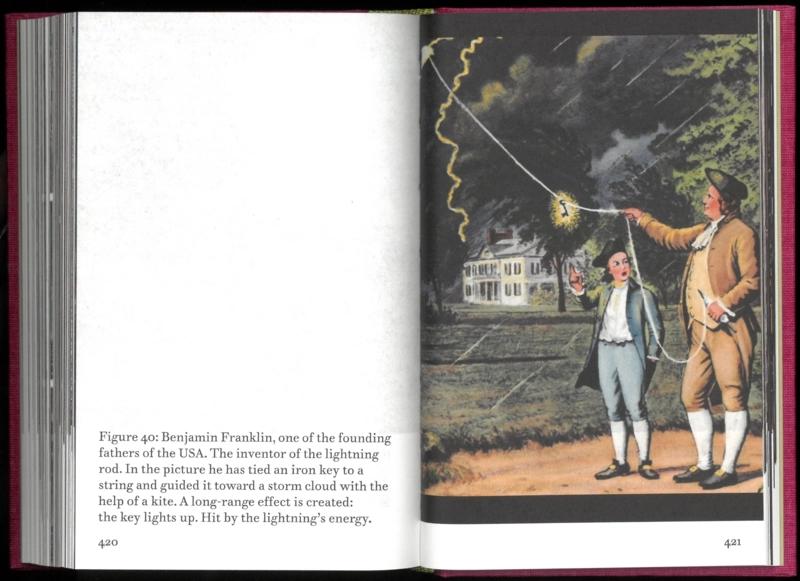
Extras
Alexander Kluge speaks about ‘The Dragonfly’s Eye My Virtual Camera AI’
Conversations: Anselm Kiefer and Alexander Kluge
______________
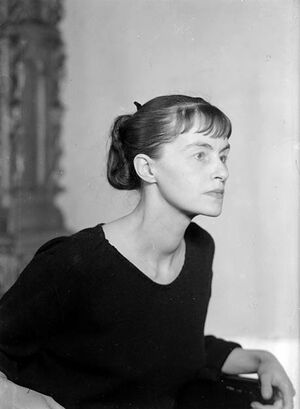
‘Unica Zürn was born in 1916 in Berlin-Grunewald as Nora Berta Unica Ruth. Her mother was Helene Pauline Heerdt, and her father was Ralph Zürn, a writer and editor and cavalry officer who was stationed in Africa; he often brought Zürn exotic, ephemeral gifts he had collected in his travels. Her parents divorced in 1930. During her childhood, Zürn often dreamed of a male fantasy figure she dubbed “the man of Jasmine.” She left school at the age of fifteen, and in 1933, after a stint at business school, she worked at the studios of Universum Film AG in Berline as a shorthand typist. From 1936 to 1942, she wrote for commercials.
‘In 1942, Zürn married Erich Laupenmühlen and had two children with him, Katrin (born in 1943), and Christian (born in 1945). After divorcing her husband and losing custody of her children, she developed a relationship with the painter Alexander Camaro, who introduced her to painting. Around this time (1949-1955), she wrote short stories, reports for journals in Berlin, serials for newspapers, radio plays, and skits for a cabaret called “The Bathtub.” She separated from Camaro in 1953, the same year that she met Hans Bellmer in Berlin during an exhibition at the Galerie Springer.
‘Bellmer, a German Surrealist, encouraged her to pursue “automatic” drawings and to work on her anagrams (poems resulting from the rearrangement of the letters of a word or phrase in order to produce a new word or phrase, using all the original letters only once). Zürn also experimented with oil painting, but quickly abandoned the pursuit. Her drawings and anagrams were presented under the title Hexentexte by the Springer Berlin Gallery in 1953. In the same year, she had her first solo exhibition of automatic drawings in the Galerie Le Soleil dans la Tete in Paris (where she also had another exhibition in 1956). In attendance were well-known artists, writers and philosophers such as Breton, Man Ray, Hans Arp, Joyce Mansour, Victor Brauner, and Gaston Bachelard.
‘In 1954, Zürn moved to Paris with Bellmer and met Man Ray, André Pieyre de Mandiargues, and Max Ernst. In 1958, she participated in a series of photographs with Bellmer, who tied her up with ropes so tight that they cut into her naked body. The photos were called “Unica Tied Up,” and Bellmer’s 1959 exhibit Doll (La Poupee) that included these photos were a success. In 1959, Zürn’s own work was included in the large surrealist exhibition at the Galerie Cordey in Paris.
‘In 1957, Zürn met Henri Michaux, identifying him with “the man of Jasmine” from her dreams and took the drug mescaline with him. Zürn’s mental health began to deteriorate that same year. After stays at multiple clinics prompted by a nervous breakdown and schizoprenic crisis, the administration of psychoneural drugs, and two suicide attempts, she returned home in a wheelchair, where she destroyed many of her works. Later that year, she was then taken to the Sainte-Anne clinic in La Rochelle (and remained there for three years). Henri Michaux brought her drawing materials so she could continue to work. After this, she was interned in various other psychiatric clinics, including “La Fond” in La Rochelle (1966) and Maison Blance at Neuilly-sur-Marne (1969 and 1970). One of her doctors was Gaston Ferdiere, who was considered a friend of the surrealists.
‘Her illness provided inspiration for much of her writing, including The Man of Jasmine, which was written between 1963 and 1965 and a sketchbook of drawings, created from 1963-1964, entitled “Oracles and Spectacles” (one of her unpublished works). She published Dark Spring in 1969, while The Man of Jasmine was published posthumously in 1971. An expanded section from The Man of Jasmine, entitled The House of Illnesses, was published in 1986.
‘On April 7, 1970, Bellmer, now paralyzed from a stroke in 1969, informed Zurn that he could no longer be responsible for her. On October 18, 1970, she was discharged from La Chesnaie de Chailles, an asylum. The following day, she committed suicide by jumping from a sixth-story window in the apartment she shared with Bellmer. Bellmer, who died in 1975, was buried next to Zürn at his request at the Père-Lachaise Cemetery in Paris. Their grave is marked with the words Bellmer had written for Zürn’s funeral wreath, five years prior: “My love will follow you into Eternity.”’ — Siglio Blog
Unica Zürn @ Wikipedia
UZ @ goodreads
Two Halves: Unica Zürn
Unica Zürn and the force of imagination
Buy ‘Katrin’
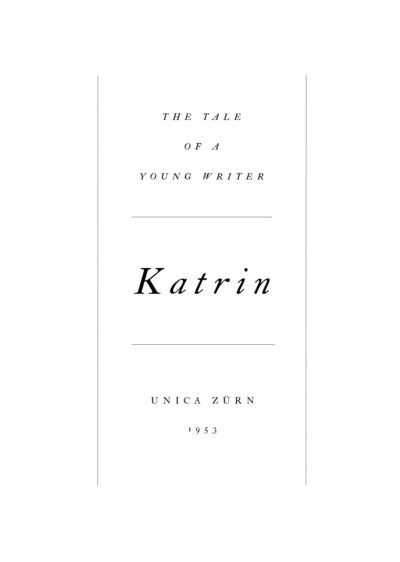 Unica Zürn Katrin – The Tale of a Young Writer
Unica Zürn Katrin – The Tale of a Young Writer
Crackers
‘A partly autobiographical novel that the German surrealist artist and author Unica Zürn (1916-1970) wrote for her ten-year-old daughter in 1953, although it would never be published in her lifetime. This is the first translation of the tale from German into English.
‘Unica Zürn tells the story of fifteen-year-old motherless Katrin, an aspiring writer, who lives with her father, also a writer. The novel is set in an imaginary world, a metropolis called Linit, split into three levels: Oberstadt (Hightown), Mittelstadt (Middletown) and Unterstadt (Lowtown), overlooked by a Volcano where the artists live and crossed by the river Emil. Presented as a book for children, apparently written for her own daughter (named Katrin), Katrin also draws on the personal biography of Zürn herself, in terms of her relationship with her father and the city of Berlin after WWII, and her experience with people on the margins of a society characterised by great tensions.’ — Crackers
Excerpt






Extras
Unica ZÜRN – Une Vie, une Œuvre : 1916-1970
UNICA ZURN
*
p.s. Hey. ** Joe, Hi Joe! I don’t know what happens now. We’re trying to figure it out. There are much bigger problems than the festival rejections, and we have to figure out how to survive them first. Thanks for asking. Yes, I saw your email. I’ll get to it this weekend. I really, really appreciate it. xo, me. ** Charalampos, Hi. I was already working with Gisele before I moved over here, but one of the reasons I did was so we could work together more closely. My favorite film that Brad Renfro appears in? Probably ‘Ghost World’. Thank you. I hope you win the Scratch. I’ve never ever played the lottery. Seems dangerously addictive. ** jay, Hi. It wasn’t a long or hugely rich period, but it was interesting and certainly a lot more fun than the general conspiracy theory delusional insanity going on now. Satanists trying to turn people gay … that’s a movie narrative just waiting for a low budget queer adaptor. Right, people money’s in the Cloud now, I keep forgetting. I’m still a wallet and jar of loose change type. Enjoy your next two! ** Dominik, Hi!!! Bacteriaburger’s real name is Natty. He’s a good writer. I don’t know what he’s up to. I haven’t heard from him in ages. We’re trying to figure out what our next options are. I’m ready for the unreal world this very second. Have a sweet weekend. Love delighted that the Olympics Opening Ceremony drove the French Far Right completely insane, G. ** _Black_Acrylic, Thanks! I’ll read up on the Orkney child abuse scandal. ** David Ehrenstein, Haha, I would never have put those two together. The McMartin Day School thing was insane. There’s a good book written about it, but I can’t remember the title. ** Jeff J, I liked that one too. I have liked Keith Waldrop’s poetry, yes. I haven’t read him in ages, but, yes, I remember him being quite good. And his spouse Rosemary is good too, I think? Saw your email. I’ll write to you this weekend, thanks. ** Lucas, Hi! Oh, the Satanic Panic era seems so quaint now compared to the complete loss of sanity and reality going on. Not that innocent people didn’t suffer, but it was more like a little horror movie going on in the real world than any of the stuff going on now could be. Growing up in LA, I remember there being a kind of general trusting vibe until the Charles Manson thing happened. That kind of permanently changed the atmosphere. I’m glad you’e feeling better. I hope the weekend follows suit. It’s cold and raining veritable cats and dogs here today. Weird. ** Nika Mavrody, Curious story there, huh, thank you. ** Uday, I think my favorite anti-inebriant movie circa the 60s was this thing called ‘Red Asphalt’, but I think I might’ve just liked the title. I think you’re right that I didn’t do a Bunraku post, and I’ll look into the possibilities of making one. I used to give people who were hard to buy gifts for vouchers for a two hour free stay in a Hot Tub Club, but I don’t think they exist anymore. The arson was on the trains out in France, not here in Paris, so all’s well. Thanks, pal. ** Justin D, Indeed re: paranoia. The railway attacks were out in France, pretty far away from Paris, and I don’t think anyone got hurt or anything. Still … ‘Paradise Lost’ is a great film, yes. The two sequels aren’t as good but are still very interesting. I helped raise money back then to help Damien get a retrial. My ear is still acting up. May have to go to doctor, ugh. I hate going to doctors. What is your weekend consisting of or, wait, did consist of? ** Steve, Oh, right, STARZ. The Olympics ceremony last night seems to have woken up a bit of Satanic Panic among the French Far Right today, coincidentally. Thanks for the report on the Eno doc. No, things haven’t calmed down. Cantinflas! What was that like? I haven’t thought about him since I was a little kid. ** Thomas H, I think, at least in the US, stories of Satanic child abusers are currently more alive and believed than they’ve ever been. The US is literally an insane asylum now. I 100% agree with your analysis of where the fearmongering about Satan begins. So far, other than all the barricaded off areas, I’m kind of really liking the Olympics so far. It’s like summer tourist season raised to the nth degree. Parisians have vamoosed and left the city to the encroachers, and they’re everywhere with their wide eyes and loud voices and oohing and ahhing. It’s charming, although it will get old. Oh, wow, that looks fantastic: ‘London’s Overthrow’. Thank you so much. Great, I really look forward to ‘paging’ through that. Thanks about the film. We’re in desperate need of a huge dose of luck. It’s funny: I watched the Olympics Ceremony, and I guess I’m in such a bubble that I just thought it looked really corny and old fashioned, and all the controversial stuff went in one eye and out the other, but, yes, the Right is freaking over here. What a world. ** Joseph, Yeah, other than screwed up travelers’ plans, everything’s fine re: the train sabotage stuff. The ceremony was clunky and ridiculous, I thought, but it sure seems to have p.o.ed the conservatives. Good luck with your bullshit. ** Harper, Really nice about the cave-y town. I’m daydreaming a bit. I adore Joe Brainard’s writing, as you no doubt know. I had a the great honor of publishing his last book with my Little Caesar Press. It’s nice: his work is very highly regarded in France and has been quite influential on some great writers: Perec, Edouard Leve, many others. Yes, the 1000+ page Sadeian novel I wrote would have probably been +10000 pages if I hadn’t had to destroy it because my mother was snooping around in my room, and I didn’t want her to find it. Yours was in verse?! Wow. I can’t imagine. So disciplined. Okay, you can keep the title secret, I understand, although I will tell you that the first book of poetry I wrote when I was 11 was called ‘Sorry I Bent Your Feathers So Long’. It can’t be worse than that. ** seb 🦠, Your cheer is very welcome, thank you ever so much. I’m weirdly liking the Olympics so far. I find them very relaxing. I usually put them on the TV and go about my business and wander into view of my TV once in a a while and watch a bit, and it’s strangely calming. ‘Dark Dungeons’, no, but I’ll check for it. I did find the tunnel woman interesting indeed. Thank you very much for the look-see. So restaurants must be quite tough for you? Or do you manage to get them to organize your plates? Happy Halloween to you!!! ** Corey Heiferman, Hi. I like the hordes so far. We’ll see. I did watch most of the ceremony. The Metal Marie Antoinette bit was kind of okay. Lady Gaga was embarrassing. Has anyone tried to research who this Satan namesake guy was? I did know John Duncan somewhat, yes. He was very involved with Los Angeles Free Music Society (LAFMS), who were/are my good friends. He’s a very interesting artist indeed. I should do a post about him. Strange that I haven’t. That sounds like a good sign to me. Enjoy the reunion and continue feeling better press change-o. ** Dev, Oh, man, your parents are a real piece of work. Wow. Are they … gone yet? Do you guys have anything at all in common that you grin together about? ** Don Waters, Hi. Haha. I can’t remember why I called then The Omen. I’m sure I had some intricate reason, but it seems so boring now. Yeah, I’m very into odd numbers. Almost all of my novels have an odd number of sections or chapters. Even numbered things make me nervous, or at least much less interested. Don’t know why though. The documentary movie about that Judas Priest trial is pretty good, as I recall. You managing to write? ** nat, Very interesting about the red cup. I’m going to dwell on that. Well, isn’t Norway the (or one of the) birthplaces of Black Metal? If so, you guys wear one of the crowns. I know all my Black Metal musician friends make pilgrimages to Norway. Enjoy the baguettes. Their goodness seems totally plausible to me, but’m not French. ** Oscar 🌀, Yes, someone else here from Glasgow pointed out that I had sent you to a dead place. I’m sorry, or I would be if you’d made the trek. It sounds like your French is already better than mine. Like I couldn’t say ‘Il m’incombe de mentionner que ce restaurant est en feu, Oscar.’. Yay: your underground house reverie. If I started reverie-ing, we’d be here all day. Yes, I’ll get back to you via email straight away! ** Jacob, Hi! Awesome to see you! How was the rest of your journey? Wait, you’re still processing it. I’ll wait. Oh, wow, ixnay on that dream, yikes. My pleasure on the successful recommendations. True, all true, about the mediocre scribing. The best things tend to have the worst writers. Seriously, if you don’t mind burning offerings to Beelzebub on our film’s behalf, we could sure use it. Don’t let the South boil you, and have a fine weekend, and it’s lovely to stay in touch! ** Okay. Up above are five books I read recently that I appear to be recommending to you. See you on Monday.


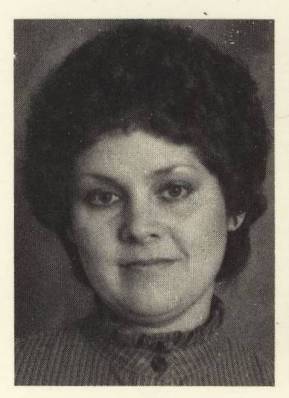
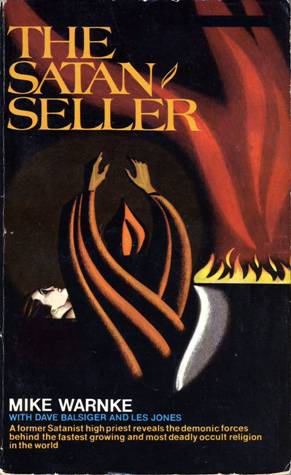

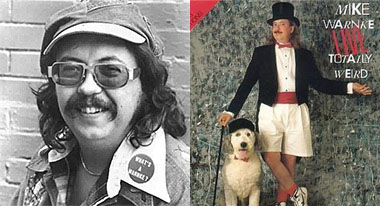


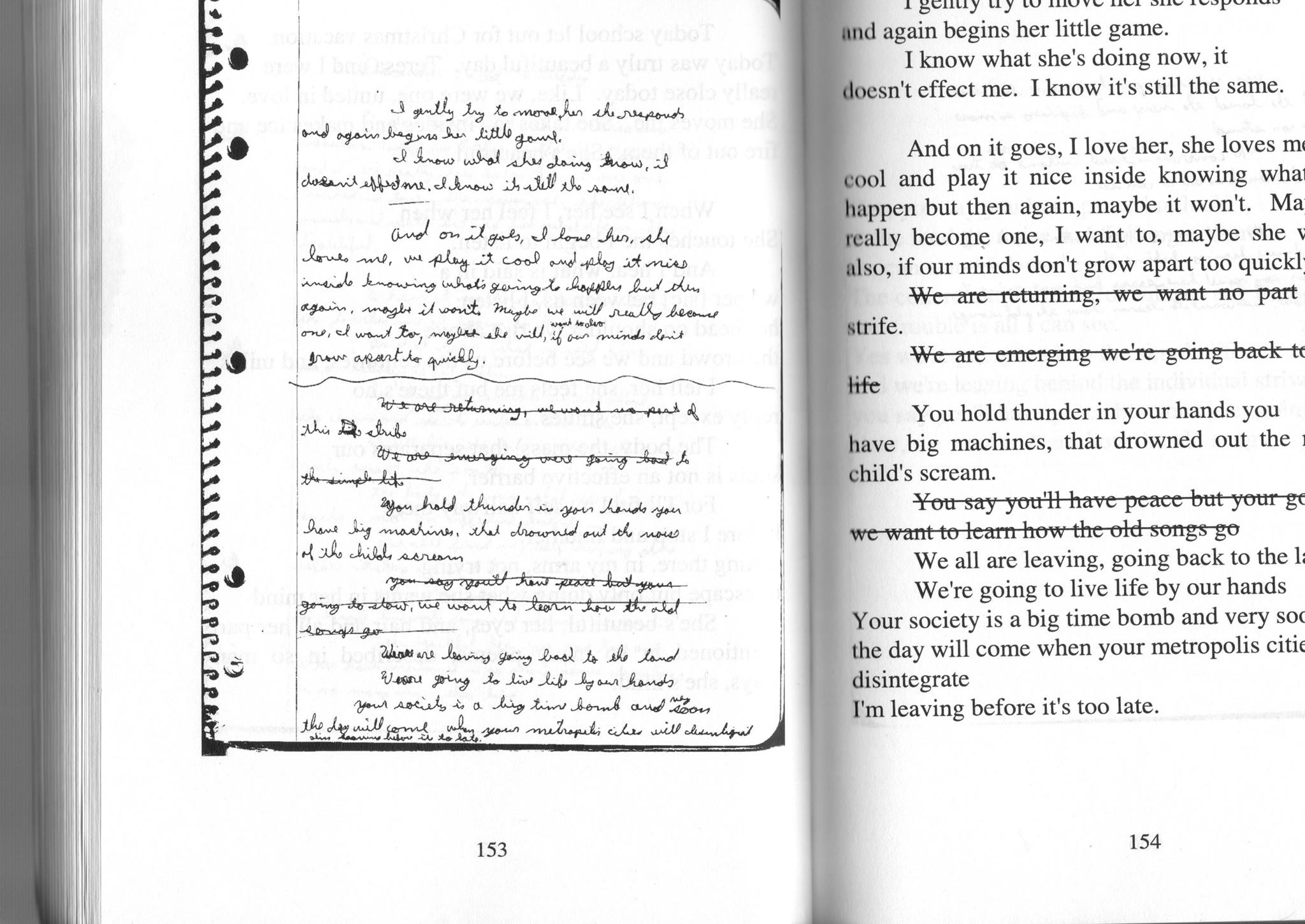












 Now available in North America
Now available in North America 